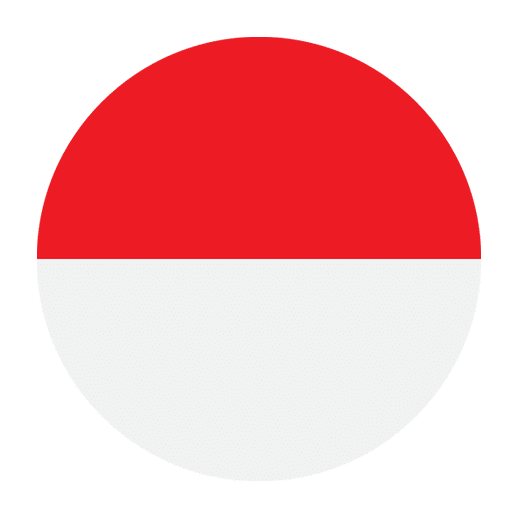The Indonesian language, known as Bahasa Indonesia, is the official language of Indonesia and one of the most widely spoken languages in the world. With over 270 million speakers, it serves not only as a means of communication but also as a symbol of national unity for a country with a vast array of ethnic groups and languages. Understanding the history of the Indonesian language provides insight into Indonesia’s rich cultural and historical tapestry.
Early Origins
The roots of the Indonesian language can be traced back to the Austronesian language family, which is one of the largest language families in the world. The Austronesian languages are believed to have originated from Taiwan around 3000 BCE. From there, Austronesian-speaking people migrated to various parts of Southeast Asia, including the Indonesian archipelago.
The early inhabitants of Indonesia spoke various indigenous languages, which over time were influenced by the waves of migrations and the region’s status as a significant trade hub. The Malay language, which is closely related to modern Indonesian, began to gain prominence in the region around the 7th century CE.
The Rise of Malay
Malay, the precursor to the Indonesian language, became a lingua franca in the region due to its simplicity and flexibility. The Srivijaya Empire, which flourished from the 7th to the 13th centuries, played a significant role in the spread of Malay. As Srivijaya extended its influence across Southeast Asia, Malay was used for administration, trade, and religious purposes.
The spread of Islam in the 13th century further solidified Malay’s position as a lingua franca. Islamic traders and missionaries used Malay to communicate with the diverse populations they encountered. Consequently, Malay became the language of religion, commerce, and diplomacy in the Indonesian archipelago.
Colonial Influence
The arrival of European colonial powers in the 16th century marked a new chapter in the history of the Indonesian language. The Portuguese were the first Europeans to establish a presence in Indonesia, followed by the Dutch and the British. Each of these colonial powers left a linguistic imprint on the region.
The Dutch East India Company (VOC) established a strong foothold in Indonesia in the 17th century. Dutch influence on the Indonesian language was profound, especially in the realms of administration, education, and law. Many Indonesian words related to governance, technology, and modern concepts are borrowed from Dutch. For example, the Indonesian word for “school” (sekolah) is derived from the Dutch “school.”
Despite the Dutch influence, Malay continued to be the lingua franca among the diverse ethnic groups in Indonesia. The language adapted and incorporated elements from Dutch, Portuguese, Arabic, Sanskrit, and other languages, making it a dynamic and evolving language.
National Awakening and the Birth of Bahasa Indonesia
The early 20th century saw the rise of Indonesian nationalism, which sought to unite the archipelago’s diverse ethnic groups against colonial rule. Language played a crucial role in this national awakening. In 1928, a pivotal moment in Indonesian history occurred with the Youth Pledge (Sumpah Pemuda). During the Second Youth Congress held in Jakarta, young Indonesian nationalists declared their commitment to one motherland (Indonesia), one nation (the Indonesian nation), and one language (Bahasa Indonesia).
This declaration marked the formal adoption of Malay as the national language, which was then referred to as Bahasa Indonesia. The choice of Malay was strategic; it was already widely spoken and understood across the archipelago, making it an ideal candidate for a unifying national language.
With the proclamation of Indonesian independence in 1945, Bahasa Indonesia was enshrined as the official language of the new nation. The Indonesian Constitution of 1945 explicitly states that the national language is Bahasa Indonesia. This decision was a testament to the language’s role in fostering national identity and unity.
Post-Independence Development
In the decades following independence, the Indonesian government implemented various policies to promote and standardize Bahasa Indonesia. The language became the medium of instruction in schools, the language of government and administration, and the primary language of the media. Efforts were made to develop a standardized orthography and grammar for Bahasa Indonesia.
The Language Development and Fostering Agency (Badan Pengembangan dan Pembinaan Bahasa) was established to oversee the development and promotion of the language. This agency played a crucial role in creating dictionaries, grammar guides, and other linguistic resources to support the use of Bahasa Indonesia.
One of the significant challenges in the post-independence period was balancing the promotion of Bahasa Indonesia with the preservation of the country’s many indigenous languages. Indonesia is home to over 700 languages, and while Bahasa Indonesia serves as a unifying language, there has been a concerted effort to protect and promote linguistic diversity.
Contemporary Usage and Global Influence
Today, Bahasa Indonesia is spoken by the vast majority of Indonesians as either a first or second language. It is the language of government, education, media, and business. The widespread use of Bahasa Indonesia has contributed to a sense of national identity and cohesion in a country with immense cultural and linguistic diversity.
In recent years, Bahasa Indonesia has also gained recognition on the global stage. As Indonesia’s economy has grown and its influence in regional and international affairs has increased, so too has the interest in learning Bahasa Indonesia. Educational institutions around the world now offer courses in the language, and it is becoming increasingly important in diplomatic and business contexts.
The digital age has further expanded the reach of Bahasa Indonesia. Social media, online content, and digital communication have made the language more accessible to a global audience. Indonesian pop culture, including music, film, and literature, has also found international audiences, contributing to the global spread of the language.
Language and Identity
The history of the Indonesian language is intertwined with the history of the Indonesian people. Bahasa Indonesia is more than just a means of communication; it is a symbol of national identity and unity. The language reflects the country’s history of trade, colonization, and nationalism, as well as its commitment to diversity and inclusion.
In a country as diverse as Indonesia, where hundreds of languages and ethnic groups coexist, Bahasa Indonesia serves as a common thread that binds the nation together. It is a testament to the power of language to foster unity and a shared sense of identity.
The Future of Bahasa Indonesia
As Indonesia continues to evolve, so too will its language. The future of Bahasa Indonesia will likely be shaped by various factors, including technological advancements, globalization, and demographic changes. The language will continue to adapt and incorporate new words and expressions, reflecting the dynamic nature of Indonesian society.
One of the ongoing challenges will be balancing the promotion of Bahasa Indonesia with the preservation of indigenous languages. Efforts to document and revitalize endangered languages will be crucial in ensuring that Indonesia’s linguistic heritage is not lost.
Furthermore, as Indonesia’s influence on the global stage grows, the importance of Bahasa Indonesia in international contexts will likely increase. The language has the potential to become a key player in regional and global communication, diplomacy, and commerce.
Conclusion
The history of the Indonesian language is a story of resilience, adaptation, and unity. From its early origins in the Austronesian language family to its rise as a lingua franca and its eventual adoption as the national language, Bahasa Indonesia has played a crucial role in shaping the identity of the Indonesian nation.
Today, Bahasa Indonesia stands as a symbol of national unity and a testament to the power of language to bring people together. As Indonesia continues to grow and evolve, so too will its language, reflecting the dynamic and diverse nature of the Indonesian people. The future of Bahasa Indonesia is bright, with the potential to influence and connect people both within Indonesia and around the world.

